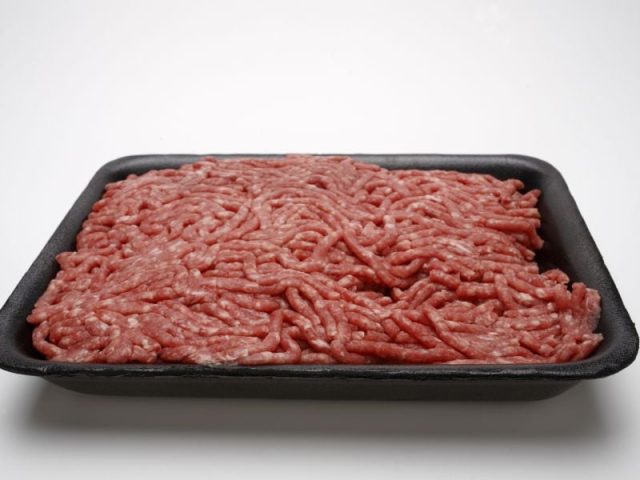By Ernie Mundell HealthDay Reporter
THURSDAY, May 2, 2024 (HealthDay News) — After investigation, the U.S. Department of Agriculture said Wednesday that the nation’s ground beef supply is so far testing negative for the presence of H5N1 avian flu.
In a statement, the agency said that its Food Safety and Inspection Service tested 30 samples of ground beef from retail outlets in “states with dairy cattle herds that had tested positive for the H5N1 influenza virus at the time of sample collection” and “all samples tested negative for H5N1.”
“These results reaffirm that the meat supply is safe,” the USDA concluded.
The nine states where bird flu has been detected in dairy cows are Colorado, Idaho, Kansas, Michigan, New Mexico, North Carolina, Ohio, South Dakota and Texas.
USDA stressed that it has long had a “rigorous meat inspection process” to ensure the safety of the meat supply.
In a news conference held Wednesday, Dr. Jose Emilio Esteban, USDA under secretary for food safety, said that “I want to emphasize, we are pretty sure that the meat supply is safe. We’re doing this just to enhance our scientific knowledge, to make sure that we have additional data points to make that statement.”
The USDA said it is also injecting a “virus surrogate†into ground beef and then cooking it at different temperatures, to see how much virus is killed under each heat setting.
As well, “we recommend consumers properly handle raw meats and cook to a safe internal temperature,†which kills germs in meat, the agency added.
No live virus in dairy products
The U.S Food and Drug Administration also announced Wednesday that it had found no sign of live H5N1 virus in a wide variety of dairy products, such as cottage cheese and sour cream. A total of 297 pasteurized retail dairy products were tested.
U.S. health officials have already been testing retail milk samples for live bird flu virus, and none has been found in any of the first batch of samples tested, federal health officials said Friday.
Those early findings should reassure the public that the milk sold in stores remains safe, officials added.
In the online update, the U.S. Food and Drug Administration said the initial test findings likely mean the pasteurization process is killing the virus.
“These results reaffirm our assessment that the commercial milk supply is safe,†the agency wrote, but testing efforts are continuing.
“The FDA is further assessing retail samples from its study of 297 samples of retail dairy products from 38 states,” the agency added. “All samples with a PCR-positive result are going through egg inoculation tests, a gold standard for determining if infectious virus is present.”
“These important efforts are ongoing, and we are committed to sharing additional testing results as soon as possible,” the FDA added.
FDA officials also tested infant and toddler formulas, which used powdered milk, and did not find any evidence of the virus, the agency noted.
Tough to control
The story is different when it comes to viral fragments of bird flu: genetic bits of the virus have been discovered in roughly 20% of retail milk samples tested in a national survey, the U.S. Food and Drug Administration said last week.
That earlier finding suggests bird flu has spread far more widely among dairy cows than officials first thought.
Samples from parts of the country that have infected dairy herds were more likely to test positive, the agency noted, and regulators stressed there is no evidence yet that cow milk poses a danger to consumers.
Still, 36 herds across nine states have been confirmed to have been infected with bird flu, also known as H5N1.
“It suggests that there is a whole lot of this virus out there,†Richard Webby, a virologist and influenza expert at St. Jude Children’s Research Hospital, told the New York Times.
While it is still possible to eradicate bird flu from the nation’s dairy farms, Webby noted it is hard to control the outbreak without knowing its full scope.
To that end, the USDA announced last week that it is now requiring mandatory testing of dairy cows moving across state lines. Before that, testing of cows had been voluntary and focused on cows with obvious symptoms of illness.
As of Wednesday, 23 people had been tested for the virus, while 44 people were being monitored after exposure to H5N1, the Times reported. Just one human infection has been reported so far, in a dairy worker in Texas who had direct contact with sick cows. The case was mild.
Still, sustained spread among cows would give the virus more chances to become more transmissible among humans.
Experts believe pasteurization, in which milk is briefly heated, should kill the virus.
“And when you destroy the virus, it’s going to release genetic material,†Samuel Alcaine, a microbiologist and food scientist at Cornell University in New York, told the Times.
“It’s not surprising†to find them in milk, he added. “It doesn’t mean that the milk is not safe.â€
More information
The U.S. Centers for Disease Control and Prevention has more on bird flu.
SOURCES: U.S. Food and Drug Administration, updates, May 1, April 25/26, 2024; CNN; New York Times
Copyright © 2024 HealthDay. All rights reserved.



















